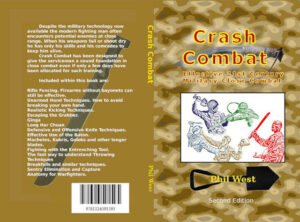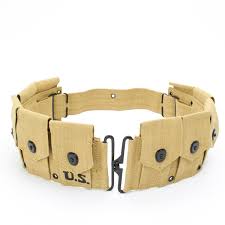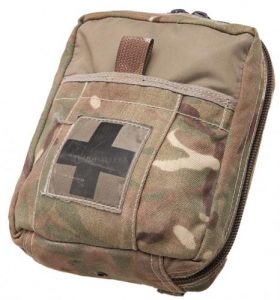
Unlike some authors, Schmitz does not delve deeply into the “nuts and bolts” of his scenarios. Many of the themes introduced are thought-provoking, however.
An interesting discussion of the Overgovernment occurs in the story “The Demon Breed”:
The nearest thing to a war the Hub’s known for a long time is when some sub-government decides it’s big enough for autonomy and tries to take on the Federation. And they’re always squelched so- quickly you can hardly call it a fight.”
“So they are,” Ticos agreed. “What do you think of the Federation’s Overgovernment?”She hesitated. One of the least desirable after effects of a nerve gun charge that failed to kill could be gradually developing mental incoherence. If it wasn’t given prompt attention, it could result in permanent derangement. She suspected Ticos might be now on the verge of rambling. If so, she’d better keep him talking about realities of one kind or another until he was worked safely past that point. She said, “That’s a rather general question, isn’t it? I’d say I simply don’t think about the Overgovernment much.”
“Why not?”
“Well, why should I? It doesn’t bother me and it seems able to do its job—as witness those squelched rebellious subgovernments.”
“It maintains the structure of the Federation,” Ticos said, “because we learned finally that such a structure was absolutely necessary. Tampering with it isn’t tolerated. Even the suggestion of civil war above the planetary level isn’t tolerated. The Overgovernment admittedly does that kind of thing well. But otherwise you do hear a great many complaints. A recurrent one is that it doesn’t do nearly enough to control the criminal elements of the population.”
Nile shook her head. “I don’t agree! I’ve worked with the Federation’s anticrime agencies here. They’re efficient enough. Of course they can’t handle everything. But I don’t think the Overgovernment could accomplish much more along those lines without developing an oppressive bureaucratic structure—which I certainly wouldn’t want.”
“You feel crime control should be left up to the local citizenry?”
“Of course it should, when it’s a local problem. Criminals aren’t basically different from other problems we have around. We can deal with them. We do it regularly.”
Ticos grunted. “Now that,” he remarked, “is an attitude almost no Palach would be able to understand! And it seems typical of our present civilization.” He paused. “You’ll recall I used to wonder why the Federation takes so little obvious interest in longevity programs, eugenics projects and the like.
She gave him a quick glance. Not rambling, after all? “You see a connection?”
“A definite one. When it comes to criminals, the Overgovernment doesn’t actually encourage them. But it maintains a situation in which the private citizen is invited to handle the problems they create. The evident result is that criminality remains a constant threat but is kept within tolerable limits. Which is merely a small part of the overall picture. Our society fosters aggressive competitiveness on almost all levels of activity; and the Overgovernment rarely seems too concerned about the absolute legality of methods used in competition. The limits imposed usually are imposed by agreements among citizen organizations, which also enforce them.”
“You feel all this is a kind of substitute for warfare?”
“It’s really more than a substitute,” Ticos said. “A society under serious war stresses tends to grow rigidly controlled and the scope of the average individual is correspondingly reduced. In the kind of balanced anarchy in which we live now, the individual’s scope is almost as wide as he wants to make it or his peers will tolerate. For the large class of nonaggressive citizens who’d prefer simply to be allowed to go about their business and keep out of trouble, that’s a non-optimum situation. They’re presented with many unpleasant problems they don’t want, are endangered and occasionally harassed or destroyed by human predators. But in the long run the problems never really seem to get out of hand. Because we also have highly aggressive antipredators. Typically, they don’t prey on the harmless citizen. But their hackles go up when they meet their mirror image, the predator—from whom they can be distinguished mainly by their goals. When there are no official restraints on them, they appear to be as a class more than a match for the predators. As you say, you handle your criminals here on Nandy-Cline. Wherever the citizenry is making a real effort, they seem to be similarly handled. On the whole our civilization flourishes.” He added, “There are shadings and variations to all this, of course.
The harmless citizen, the predator and the anti-predator are ideal concepts. But the pattern exists and is being maintained.”
“So what’s the point?” Nile asked. “If it’s maintained deliberately, it seems rather cruel.”
“It has abominably cruel aspects, as a matter of fact. However, as a species,” said Ticos, “man evolved as a very tough, alert and adaptable creature, well qualified to look out for what he considered his interests. The War Centuries honed those qualities. They’re being even more effectively honed today. I think it’s done deliberately. The Overgovernment evidently isn’t interested in establishing a paradisiacal environment for the harmless citizen. Its interest is in the overall quality of the species. And man as a species remains an eminently dangerous creature. The Overgovernment restricts it no more than necessity indicates. So it doesn’t support the search for immortality—immortality would change the creature. In what way, no one can really say. Eugenics should change it, so eugenics projects aren’t really favored, though they aren’t interfered with. I think the Over-government prefers the species to continue to evolve in its own way. On the record, it’s done well. They don’t want to risk eliminating genetic possibilities which may be required eventually to keep it from encountering some competitive species as an inferior.”




